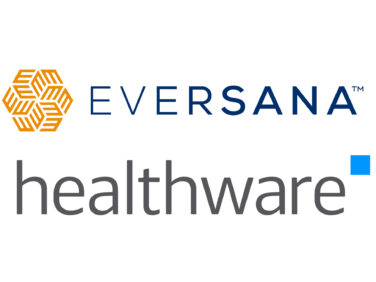Quality improvement and, more specifically, the quality measures by which a clinician’s performance of care delivery is assessed are growing in importance. Shifts in healthcare policy, such as the enactment of the Affordable Care Act (ACA), and other policies impacting reimbursement and healthcare quality, necessitate that clinicians pay attention as performance benchmarks increasingly determine their financial bottom lines and shape their daily clinical practice expectations.
Each year, clinicians are recognizing the growing impact of quality metrics on their payment structures. In response, they are seeking to demonstrate high-quality care delivery in order to take advantage of increased payment opportunities when meeting quality improvement goals—and avoid punitive reimbursement actions for not meeting those benchmarks.
However, in the busy flow of the clinician’s day, a broader array of challenges related to practicing medicine compete for attention. As a result, practitioners are often eager for accessible and relevant training and information on quality improvement in their therapeutic areas. When this information is delivered along with critical scientific advances or evidence-based findings, such as through CME, the clinician benefits from improved knowledge of quality measures within the context of education aimed at improving practice.
Thus, the credible resource that clinicians value to stay up to date on recent advances and meet their requirements for licensing and certification, CME is often an ideal mechanism to increase their awareness and competency related to quality measures and practice improvement. Commercial supporters of CME should recognize that it is not, by itself, quality improvement, but it is a critical mechanism for driving quality improvement. Therefore, it is a relevant and significant tool within the comprehensive commercial support toolkit to improve clinician practice and healthcare delivery.
A Bridge to Quality Improvement
CME is optimized as a bridge to quality improvement when basic tenets of quality improvement-focused CME (QI CME) are engineered into education initiatives. Clinicians’ quality metrics, or their real-world performance data, are the substructure or foundation of this “quality bridge.” CME design that uses best practices for appropriate framing of the education around quality improvement goals is the superstructure, or the primary load-carrying structure of the bridge. The use of quality measures as outcomes data that assess the impact of CME on actual physician performance is the bridge deck, or wearing surface. It carries the clinician toward performance improvement and enables supporters and stakeholders to determine the “carrying capacity” of the intervention for improving practice on a larger scale.
Best-practice QI CME is designed to demonstrate clinicians’ practice gaps as determined by quality measures and offer a solution, through education intervention, to meet their individual educational needs. CME, and especially asynchronous, on-demand or online CME, provides education and information for clinicians at their point of need and within their practice environment. Clinicians often turn to CME to address clinical challenges as they arise.
More sophisticated models for CME are designed to help clinicians see their own performance gaps and address those gaps specifically. This is done through tailored learning interventions that use assessments to determine clinicians’ pre-education, or baseline, performance, then provide or direct clinicians to educational activities to meet these identified gaps.
Quality improvement-focused clinician education must be built on a solid foundation—a “substructure” in the bridge analogy—to ensure that CME meets existing gaps, based on quality improvement goals. This may be accomplished, for example, by demonstrating individual clinician’s performance gaps through examining their real-world performance metrics, based on quality measures. Then, a customized learning plan to meet the gaps is provided. When they have their own performance data or their patient-level outcomes metrics on quality measures available, clinicians will generally recognize and appreciate the need for improvement.
The second key element in a QI CME bridge to performance improvement: Having an appropriate “superstructure,” or framework for the education intervention that incorporates quality measures within the total education design. CME that aims to meet QI goals must incorporate quality measures within the learning plan and use appropriate adult learning theory and approaches.
Where the learning objectives for a QI CME program are constructed around aims toward advancing awareness and practical knowledge of quality measures—such as HEDIS or other national, endorsed measures, as well as therapeutic science and clinical practice—the clinician is able to meet their multidimensional practice and information needs through the QI CME. Well-designed QI CME will enable clinicians to stay up to date on advances in their specialty and/or improve their clinical competency and decision-making as well as increase their working knowledge of relevant quality measures and their application. In this manner, QI CME meets the multifaceted clinical and practice needs of the busy clinician. In this model, the CME becomes the structure through which the art of medicine is improved. As well, the practice of quality-based care delivery is advanced.
Closing Knowledge Gaps
A “quality” QI CME program incorporates quality measures within the framework of the CME design—beginning with the learning objectives, and moving on through the content and post-assessment design. It also provides the clinicians with the information and knowledge they need to meet any gaps that were evidenced in the baseline examination of their performance data. Thus, well-founded QI CME will include content to bridge the gaps that physicians have evidenced in their specific therapeutic areas.
Meeting these gaps may require improved awareness of the relevant quality measures and their relevance to their practice, as well as increased knowledge of therapeutic advances and improved clinical decision-making. Appropriately designed QI CME will leverage the strength of CME to meet physician needs for education and competency, and also provide greater relevance to the new models for performance measurement using QI metrics. The result is that CME, as a significant tool within the quality improvement toolkit, gains in relevant value as an effective intervention for practice change for the clinician as well as for the practices, institutions and systems in which clinicians practice.
The third and final element of the “bridge” analogy is the bridge deck, or the load-bearing surface upon which one moves from one end of the bridge to the other. This bridging structure, the element that demonstrates that a chasm has indeed been crossed, is the measurement plan for the QI CME initiative. Appropriately designed QI CME will use quality metrics—and ideally, objective, up-to-date practice data—to assess the impact of the education intervention on performance.
Using “Live” Physician-level Data
Clinician performance data may be collected through “live” physician-level data. This is data about how well the clinician actually applied the measure in practice, including the percentage of appropriate referrals made in accordance with the quality measure, patient-level outcomes data (i.e., patient data that can be used as a measure of the outcomes of appropriate clinical care, such as improvements in LDL or HbA1c measures), and through other measurement models for clinician performance, including using patient case vignettes or self-reported practice data.
The use of quality measures as the framework for outcomes assessment—and actual quality metrics data as a measure of clinician performance—provides a demonstration of the impact of the QI CME on bridging quality performance gaps. QI CME may be measured through improving awareness, competency and knowledge among clinicians in applying relevant quality measures and understanding how the measures are relevant to clinical decision-making. In best-practice models, the measurement of QI CME would include real-time collection of clinicians’ performance data—from electronic medical records or other performance capture mechanisms—to determine the impact of the initiative through pre- and post-intervention comparison. Ultimately, it provides a comparison of the individual clinician’s performance to national quality benchmarks, and institutional or peer-based metrics.
Constructed in this manner, QI CME will meet multiple goals in helping clinicians to improve their performance—as well as their performance metrics—in order to meet their own professional maintenance needs. Simultaneously, it meets the burgeoning requirements to demonstrate quality performance and improvement of their technical and interpersonal competency as healthcare professionals. By providing evidence of clinicians’ improvement—as well as any remaining gaps—the QI CME intervention is a valuable tool for continuous professional development. It provides the results of improvement to the clinicians as feedback that serves to continually engage and encourage participation in QI initiatives.
Commercial supporters of a well-designed QI CME benefit from the use of quality metrics as the assessment rubric for measuring the impact of the education intervention. This approach provides robust aggregate data on clinician performance improvement associated with an intervention, which may be valuable to multiple stakeholders within the commercial organization.
Finally, quality improvement findings from QI CME interventions that are founded on, designed with, and measured by quality measures would be of value to the larger clinician, commercial supporter, and medical education communities. It would also be appropriate for broad dissemination through publications, which would further leverage the initial investment in such initiatives and expand their reach and significance to a broader audience.






